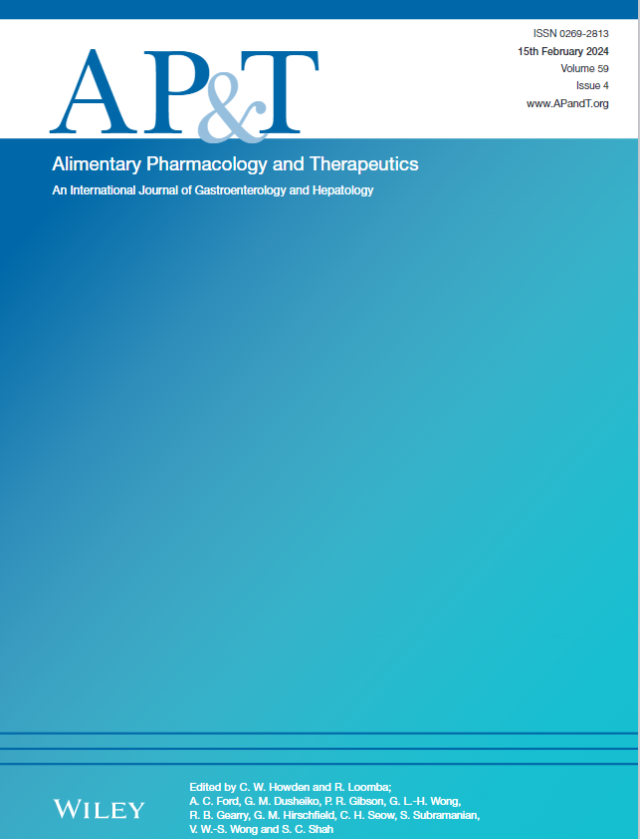Cost-Utility Analysis of Biomarker-Based vs. USG + AFP Strategies for HCC Surveillance in Chronic Hepatitis B.
IF 6.7
1区 医学
Q1 GASTROENTEROLOGY & HEPATOLOGY
引用次数: 0
Abstract
BACKGROUND The standard surveillance for hepatocellular carcinoma (HCC) involves ultrasound (USG) with alpha-fetoprotein (AFP) every 6 months. However, limitations, such as restricted access, radiologist shortages, and uncertain cost-effectiveness, persist. AIMS We assessed the cost-effectiveness of traditional and biomarker-based HCC surveillance strategies in patients with chronic hepatitis B (CHB). METHODS A Markov model simulated a cohort of patients with CHB to evaluate the cost-effectiveness of various surveillance strategies: USG + AFP, GAAD, GALAD, ASAP, and no surveillance. Input parameters were sourced from literature and Thai healthcare data. The analysis adopted a societal perspective and lifetime horizon, calculating incremental cost-effectiveness ratios (ICERs) in Thai Baht (THB) per quality-adjusted life year (QALY) gained. Sensitivity analyses assessed robustness. RESULTS ASAP every 6 months was the most cost-effective strategy, with ICERs of 102,443 THB (~2957 USD) per QALY versus ASAP every 12 months and 76,447 THB (~2207 USD) per QALY versus no surveillance. Although GAAD and GALAD every 6 months achieved similar QALYs, they were dominated due to higher costs. Annual surveillance improved cost-effectiveness but remained inferior to ASAP every 6 months. USG + AFP every 6 months incurred the highest lifetime cost (166,253 THB, ~4800 USD). Sensitivity analyses confirmed the robustness of ASAP every 6 months, with key drivers including biomarker costs, HCC stage utilities, and incidence rates. CONCLUSIONS ASAP every 6 months is the most cost-effective HCC surveillance strategy for patients with CHB and may be particularly suitable for resource-limited settings. Biomarker-based surveillance should be prioritised to improve outcomes and optimise resource use.基于生物标志物与USG + AFP监测慢性乙型肝炎HCC策略的成本-效用分析
背景:肝细胞癌(HCC)的标准监测包括每6个月超声(USG)和甲胎蛋白(AFP)。然而,诸如准入受限、放射科医生短缺和成本效益不确定等限制仍然存在。目的:我们评估了传统和基于生物标志物的HCC监测策略在慢性乙型肝炎(CHB)患者中的成本-效果。方法采用Markov模型模拟CHB患者队列,评估各种监测策略(USG + AFP、GAAD、GALAD、ASAP和无监测)的成本-效果。输入参数来源于文献和泰国医疗保健数据。分析采用社会视角和生命周期,计算每获得的质量调整生命年(QALY)以泰铢(THB)为单位的增量成本效益比(ICERs)。敏感性分析评估稳健性。结果每6个月ASAP是最具成本效益的策略,ICERs为102,443泰铢(约2957美元)/ QALY,而ASAP为每12个月,76,447泰铢(约2207美元)/ QALY,而没有监测。尽管GAAD和GALAD每6个月获得相似的QALYs,但由于成本较高,它们占主导地位。年度监测提高了成本效益,但仍不如每6个月一次的尽快监测。每6个月的USG + AFP成本最高(166253泰铢,约4800美元)。敏感性分析证实了每6个月ASAP的稳健性,主要驱动因素包括生物标志物成本、HCC分期效用和发病率。结论sasap每6个月是CHB患者最具成本效益的HCC监测策略,可能特别适用于资源有限的地区。应优先考虑基于生物标志物的监测,以改善结果并优化资源利用。
本文章由计算机程序翻译,如有差异,请以英文原文为准。
求助全文
约1分钟内获得全文
求助全文
来源期刊
CiteScore
15.60
自引率
7.90%
发文量
527
审稿时长
3-6 weeks
期刊介绍:
Alimentary Pharmacology & Therapeutics is a global pharmacology journal focused on the impact of drugs on the human gastrointestinal and hepato-biliary systems. It covers a diverse range of topics, often with immediate clinical relevance to its readership.

 求助内容:
求助内容: 应助结果提醒方式:
应助结果提醒方式:


